DP Hélène Louvart AFC mixed 35mm and 16mm formats and aspect ratios to bewitching effect for Alice Rohrwacher's 'La Chimera'
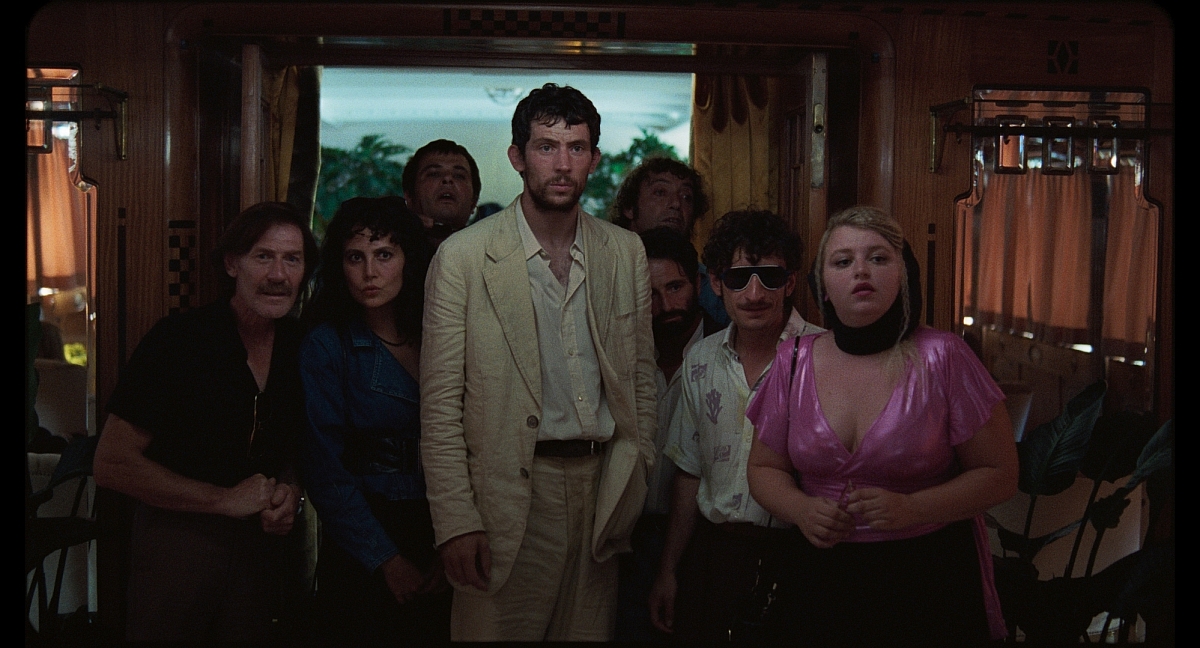
Josh O’Connor stars as Arthur in Alice Rohrwacher's acclaimed La Chimera, captured variously on 35mm, S16mm and 16mm film formats by DP Hélène Louvart AFC. Image © Tempesta SRL.
Shooting on Kodak film, French DP Hélène Louvart AFC blended 35mm and 16mm camera formats and aspect ratios to fuse reality with fantasy for Alice Rohrwacher's acclaimed La Chimera.
Set in Tuscany during the 1980s, the film follows Arthur, a dishevelled, chain-smoking and once-respectable English archaeologist. He is freshly released from prison and returning by train to the rural town where he and his motley band of 'tombaroli' (tomb raiders) earn a meager living trafficking ancient Etruscan artifacts they loot from dark, subterranean catacombs.
Arthur dreams of Beniamina, the woman he loved, now presumed dead, and visits Beniamina's ailing, elderly mother Flora who lives in a decrepit villa, where she is surrounded by predatory daughters and supported by Italia, a young housemaid who is keeping two children secretly in the house. Arthur yearns to be reunited with Beniamina in the spirit world, and legend has it that a buried door joins this world to the next. Yet despite the allure of dreams and visions of beyond, his nascent connection with Italia hints at the treasures real life can hold.
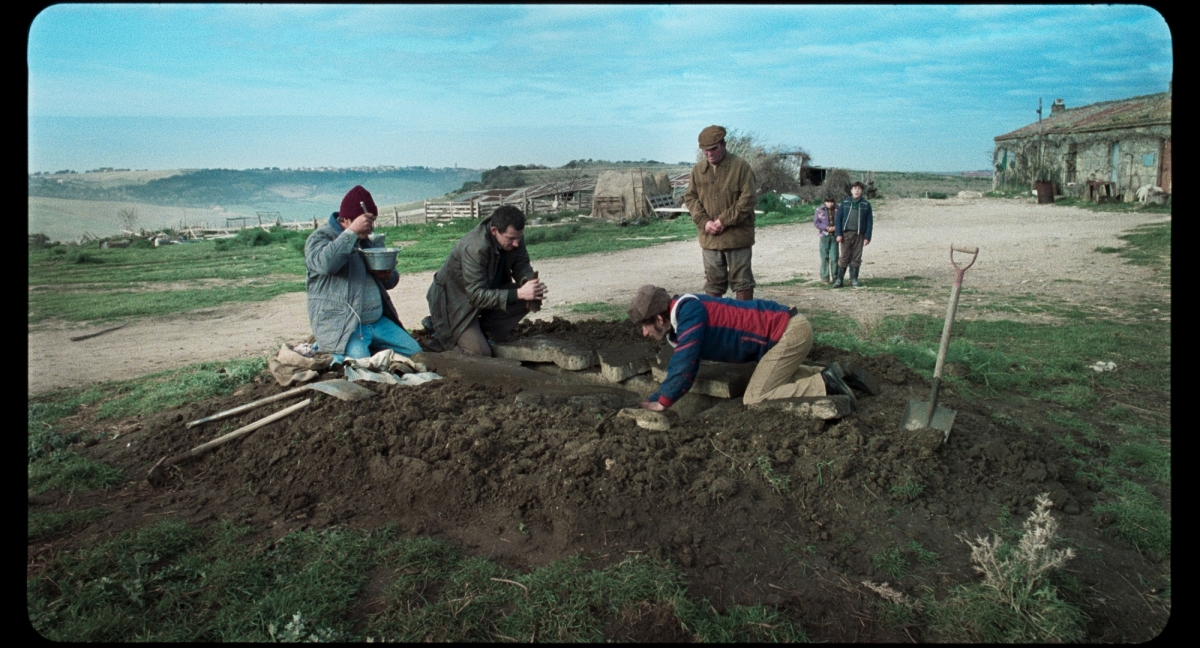
The tombaroli at work in Alice Rohrwacher's La Chimera. Image © Tempesta SRL.
La Chimera was selected to compete for the Palme d'Or at the 2023 Cannes Film Festival. It earned critical acclaim worldwide for Rohrwacher's portrayal of Italy as a treasure trove of past and present glories, and kudos for the exhilarating fusion of realism and magical realism in Louvart's shape-shifting cinematographic style.
Filming took place across two separate five-week stints, during the winter and summer months of 2022, at locations around what was ancient Etruscan Etruria. These included: the hill town of Montalcino and the Asciano-Monte Antico railway in southern Tuscany; the communes of Tarquinia, Blera, San Lorenzo Nuovo and Civitavecchia in northern Lazio; and Castel Giorgio in Umbria. Although there is an abundance of human-made subterranean passageways, catacombs and burial chambers in these areas, access limitations meant that some of the underground sets had to be specially-constructed. Filming also took place on Frasca beach and the nearby Torre Valdaliga Nord coal-fired power station.
La Chimera marks Louvart's continuing collaboration with Rohrwacher. The pair previously worked together on the coming-of-age drama Corpo Celeste (2011), shot on 16mm, The Wonders (2014), which won the Grand Jury Prize at the 2014 Cannes Film Festival and was framed again by Louvart using 16mm, Rohrwacher's 2015 short De Djess, which harnessed 35mm film, and the much-acclaimed Lazzaro Felice (Happy As Lazzaro) (2018), which was captured on 16mm.
Behind-the-scenes photo of DP Hélène Louvart AFC shooting La Chimera. Photo by Simona Pampallona.
"Alice's scripts are always interesting, and this story about the real world, the under-world and the space in-between, was really intriguing to me," says Louvart about her initial discussions with Rohrwacher about La Chimera. "On each production we evolve our visual storytelling style. Corpo Celeste was completely handheld. The Wonders had a more controlled handheld style, and I framed Lazzaro Felice largely from an objective perspective, to see things through Lazzaro's eyes.
"We wanted to try something different for this production, to mix different ways of shooting – handheld, easy-rig, tripod and dolly, using prime and zoom lenses – so as to have a more lively and fluid camera than we'd ever had before.
"We also wanted to find ways to subtly separate the depiction of Arthur's daily life against what's happening beneath his feet and his melancholic reveries. After some discussion we came up with the idea of mixing between camera formats to do this. We decided to shoot in Super16mm in 1.66:1 aspect ratio for daily life, on 35mm in 1.85:1 for anything Etruscan or anything linked with the Etruscan spirits or souls underground, and to harness regular 16mm film in 1.33:1 for Arthur's daydreams, flashbacks of Beniamina, and other memories."
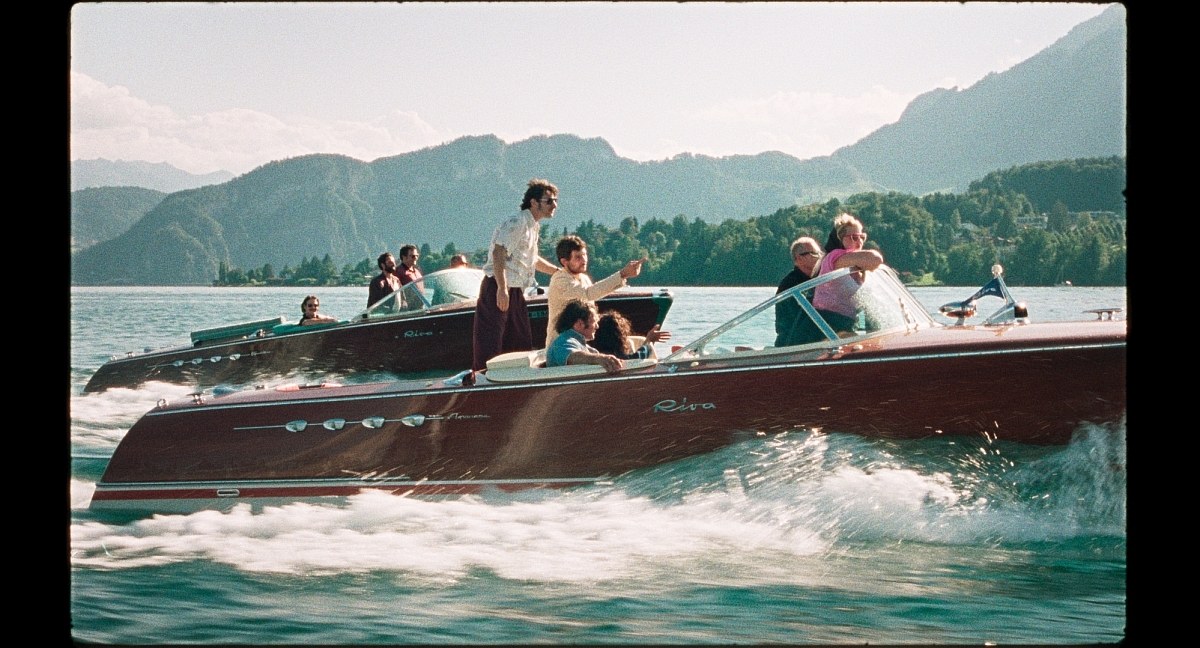
A scene from Alice Rohrwacher's acclaimed La Chimera. Image © Tempesta SRL.
The DP reports that there were precious few visual references for the film, other than observing Federico Fellini's Roma (1972, DP Giuseppe Rotunno AIC) for the scene in which the frescos in an ancient catacomb are ruined by fresh air when it is opened by excavators. Louvart says her and Rohrwacher's main research involved investigating Etruscan civilization, scrutinizing historic objects and sculptures in museums in Rome and Tarquinia, so as to gain deeper understandings into the distant past and the motives and mentalities of grave diggers in the present.
Louvart, who operated during production, went with ARRIFLEX 416 16mm and ARRICAM LT 35mm cameras for the mainstay of the shoot, harnessing a Bolex Paillard H16 REX3 Reflex 16mm camera to film Arthur's reveries. Lenses used on the 16mm cameras were Zeiss Ultra Primes. Lightweight ARRI Alura T2.8 15.5-45mm and Alura Studio T2.6 18-80mm and T2.6 45-250mm zooms were added to the optical choice when shooting on 35mm. The camera package was supplied by D-Vision in Rome.
"La Chimera was mainly a single camera shoot, with me operating," says Louvart. "The combination of the ARRIFLEX 416 camera and Ultra Prime lenses gave me excellent image quality, and formed an agile camera package that allowed me to move with freedom for scenes of everyday life, such as on the train and also during the town carnival, when we also had a second 16mm film camera to capture faces in the crowd. Of course, we easily adopted a far more sedate and staged approach when filming scenes inside Flora's house using that same camera and lens combination.
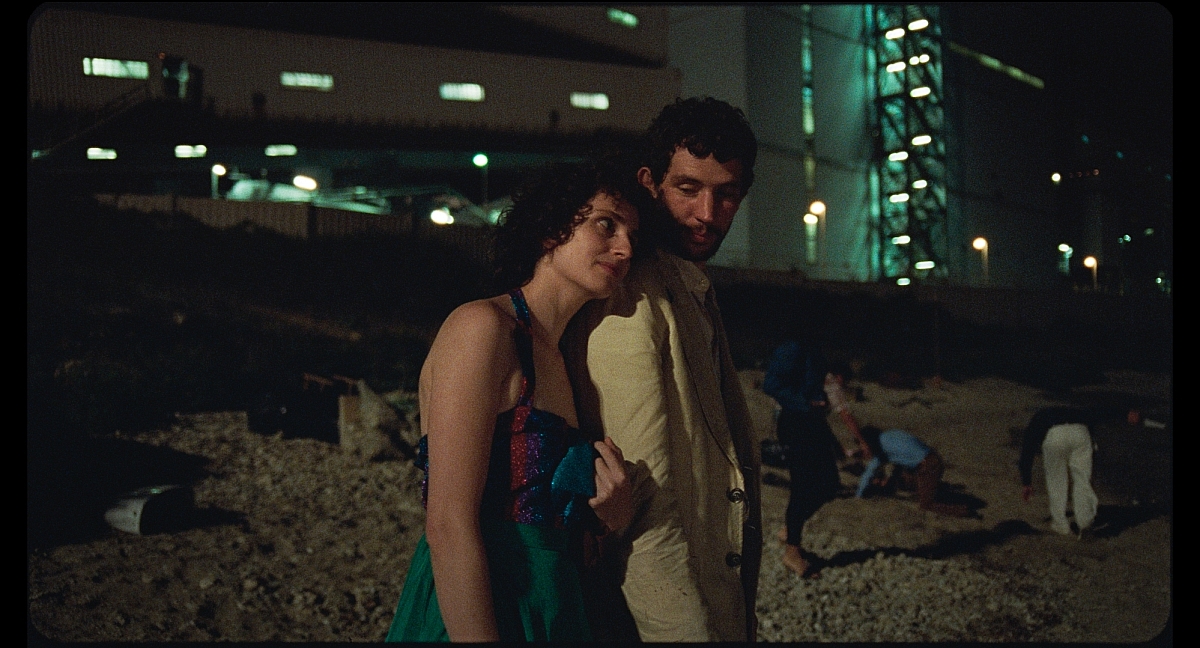
Carol Duarte plays Italia, with Josh O’Connor as Arthur, in Alice Rohrwacher's La Chimera. Image © Tempesta SRL.
"However, for scenes involving Arthur's hunt for ancient artifacts or dialogue about the Etruscan world, we changed to shooting with the ARRICAM LT 3-perf 35mm, to create a subtle visual distinction between everyday life, although the way of framing and moving camera was not radically different. We shot all of the night scenes on 35mm as I knew it would render these moments best, especially the countryside exteriors that didn't have any street lighting, which would have to illuminate those ourselves."
All of the day/night, interior/exterior scenes shot during the winter leg of production were captured on KODAK VISION3 500T 35mm 5219 or 16mm 7219 Color Negative Film. The shoot in the summer months added KODAK VISION3 250D 35mm 5207 and 16mm 7207 into the mix. Film processing and 4K scanning was done at Augustus Color in Rome, where colorist Thomas Bouffioulx later supervised the final color grade.
Explaining her choice of filmstocks, Louvart says, "I went with just the 500T during our winter shoot because it involved a lot of dark/low-light exterior and night interior scenes, and I knew it would offer enough exposure along with our various forms of HMI, LED, candle and fire lighting sources. I sometimes did a little pull-processing at the lab, such as the day-interior scenes at Flora's villa to balance the details of the dark interior with the sky outside the window. Shooting with 500T, I dealt with day exteriors using NDs, and it was also much easier and faster to deal with just one stock.
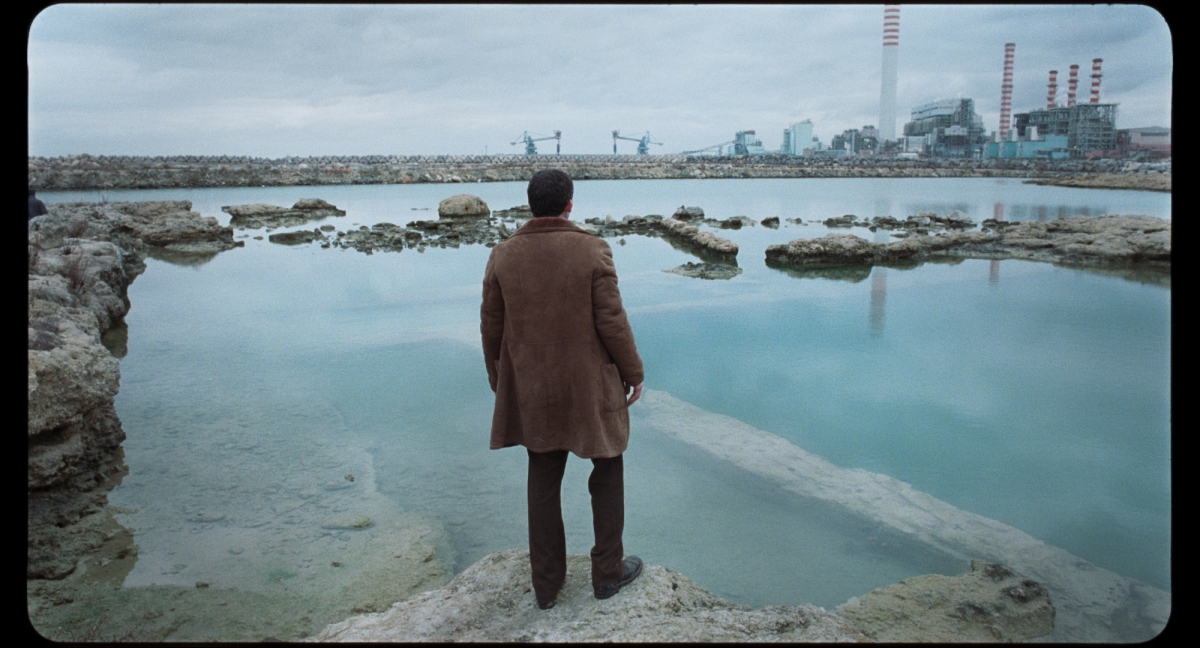
A scene from Alice Rohrwacher's acclaimed La Chimera. Image © Tempesta SRL.
"During the summer shoot we filmed outside in broad daylight much more, so it was great to rely on the 250D for those scenes. The 500T and 250D both absorb the natural color of locations and skin tones nicely, and they match really well together too, in 35mm and 16mm formats. Also, Alice and I really liked the organic, textural and emotional feeling of 16mm for Arthur's dreams and flashbacks."
Louvart's crew included 1st AC Helene Degrandcourt, with Ilya Sapeha and Tiziana Poli brought in as additional camera operators when required. The key grips were Carlo Postiglione and Daniele Postiglione. For the winter shoots Louvart's gaffer was Marianne Lamour with Ernst Bruner taking on that role during the summer leg of production.
In keeping with Rohrwacher's preference, Louvart maintained a mainly naturalistic approach to the lighting but sometimes heightened the look to evoke a sense of the ethereal.
Behind-the-scenes photo of DP Hélène Louvart AFC shooting La Chimera. Photo by Simona Pampallona.
"We shot the exteriors in available light and were lucky to have real sunshine flickering magically along the train carriage during Arthur's journey home," Louvart explains. "On day interiors, such as the dark rooms in Flora's villa, we bathed the scene with direct or diffused light from 9K or 18K HMIs outside, depending on the scene's time of day. We then shaped the light with softer illumination from a variety of LEDs, such as a Rosco Dash on the camera, plus carpet lights and Astera tubes around the room, which could all be easily controlled from an iPad.
"When Arthur and the tombaroli are exploring the darkened caves, the actors carried small LED torches and real candles, and we encouraged them to keep these close to their faces. However, to avoid the backgrounds being completely dark, we carefully introduced a touch of additional light from ARRI L5 and L7 Fresnels. We lit the night scenes of the dances after the carnival with real fire as our main source but shot the reverses with some additional light to compensate for the contrast."
Reflecting on her involvement on La Chimera, Louvart concludes, "Alice and I are very good friends, and I had yet another great experience working with her. I also loved shooting on film once again. I always felt comfortable that the dailies would be a pleasant surprise and think the result shows how incredible film is for storytelling."